Myths about teaching can hold you back


- Year 9
Checking and securing understanding of the distributive law with algebraic terms
I can use the distributive law to multiply an expression by a term.


- Year 9
Checking and securing understanding of the distributive law with algebraic terms
I can use the distributive law to multiply an expression by a term.
These resources were made for remote use during the pandemic, not classroom teaching.
Switch to our new teaching resources now - designed by teachers and leading subject experts, and tested in classrooms.
Lesson details
Key learning points
- The distributive law can be understood using an area model.
- The distributive law can help us multiply an expression by a term.
- The expression may contain any number of terms.
Keywords
Distributive law - The distributive law says that multiplying a sum is the same as multiplying each addend and summing the result.
Common misconception
Pupils forget to multiply every term in the bracket by the term outside the bracket.
Remind pupils about the distributive law with numerical examples, e.g. 4(3 + 7) and show that this is not equivalent to 12 + 7. Using algebra tiles can also help pupils to make sense of this skill.
To help you plan your year 9 maths lesson on: Checking and securing understanding of the distributive law with algebraic terms, download all teaching resources for free and adapt to suit your pupils' needs...
To help you plan your year 9 maths lesson on: Checking and securing understanding of the distributive law with algebraic terms, download all teaching resources for free and adapt to suit your pupils' needs.
The starter quiz will activate and check your pupils' prior knowledge, with versions available both with and without answers in PDF format.
We use learning cycles to break down learning into key concepts or ideas linked to the learning outcome. Each learning cycle features explanations with checks for understanding and practice tasks with feedback. All of this is found in our slide decks, ready for you to download and edit. The practice tasks are also available as printable worksheets and some lessons have additional materials with extra material you might need for teaching the lesson.
The assessment exit quiz will test your pupils' understanding of the key learning points.
Our video is a tool for planning, showing how other teachers might teach the lesson, offering helpful tips, modelled explanations and inspiration for your own delivery in the classroom. Plus, you can set it as homework or revision for pupils and keep their learning on track by sharing an online pupil version of this lesson.
Explore more key stage 3 maths lessons from the Expressions and formulae unit, dive into the full secondary maths curriculum, or learn more about lesson planning.

Licence
Prior knowledge starter quiz
6 Questions
Q1.What does the symbol $$\equiv$$ represent in the identity $$x + x + x \equiv 3x$$ ?
Q2.Which of these examples show two like terms?
Q3.Which of these bar models represents 3 lots of the expression $$2x + 1$$ ?
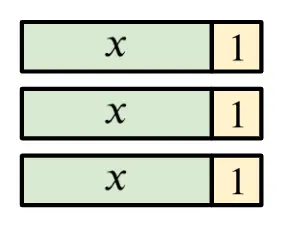
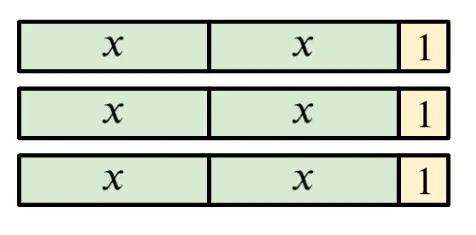
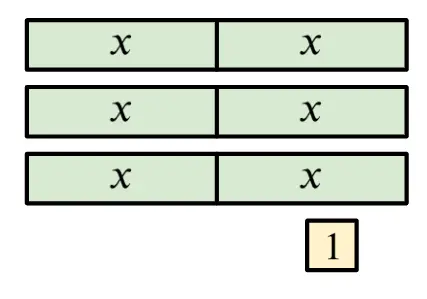

Q4.Match the product of two terms with its simplified expression.
$$3 \times 2x$$ -
$$6x$$
$$3 \times -2x$$ -
$$-6x$$
$$-3 \times -x$$ -
$$3x$$
$$x \times 2x$$ -
$$2x^2$$
$$-x \times 2x$$ -
$$-2x^2$$
$$-3x \times -2x$$ -
$$6x^2$$
Q5.Which of these is an equivalent calculation to $$44\times 12$$ ?
Q6.Match each product of two terms with its simplified expression.
$$-x \times -x$$ -
$$x^2$$
$$2x \times x$$ -
$$2x^2$$
$$2x \times y$$ -
$$2xy$$
$$-2y \times x$$ -
$$-2xy$$
$$x \times -y$$ -
$$-xy$$
Assessment exit quiz
6 Questions
Q1.Use the area model to select the correct expanded form for the expression $$5(3x + 4)$$.
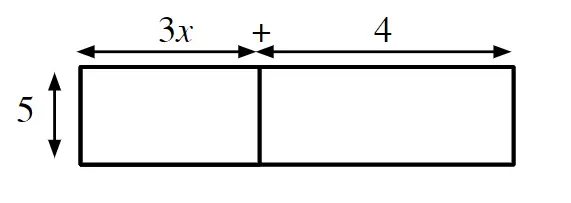
Q2.Use the area model to select the correct expanded form for the expression $$-3(4x - 6)$$.
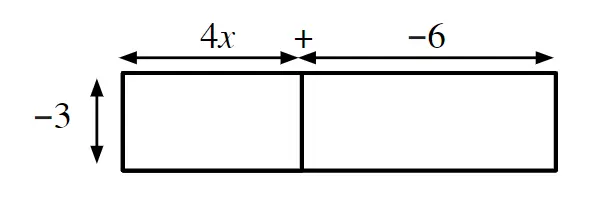
Q3.Use the area model to select the correct expanded form for the expression $$x(x - 1)$$.
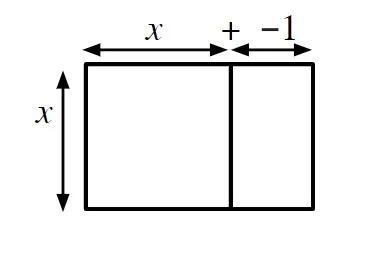
Q4.Match up each bracketed expression with its equivalent expression in expanded form.
$$4x(x - 6)$$ -
$$4x^2 - 24x$$
$$4x(x + 6)$$ -
$$4x^2 + 24x$$
$$-4x(x - 6)$$ -
$$-4x^2 + 24x$$
$$-2x(-2x + 3)$$ -
$$4x^2 -6x$$
$$-2x(2x - 3)$$ -
$$-4x^2 + 6x$$
$$2x(2x+ 3)$$ -
$$4x^2 + 6x$$

